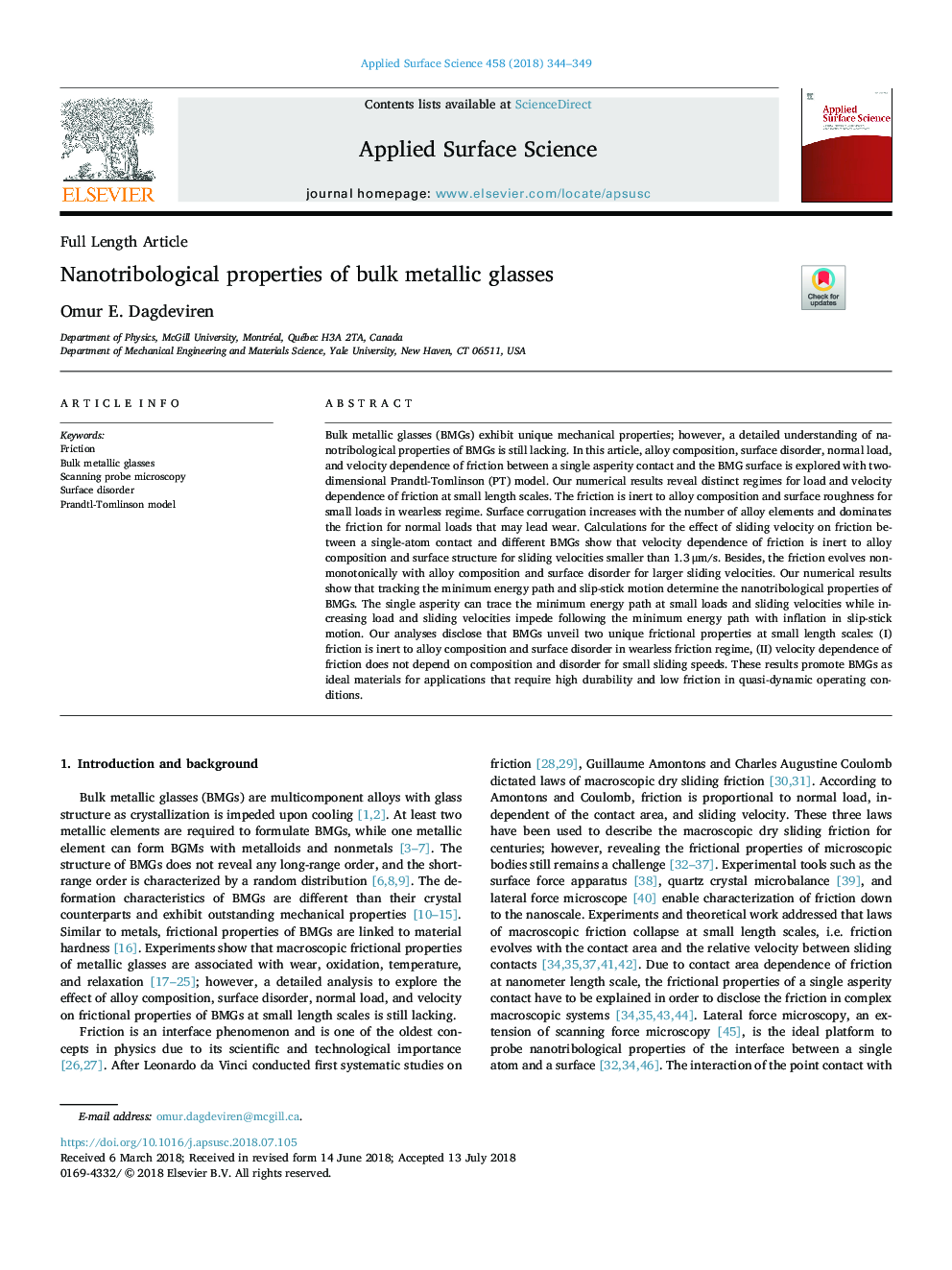| کد مقاله | کد نشریه | سال انتشار | مقاله انگلیسی | نسخه تمام متن |
|---|---|---|---|---|
| 7832852 | 1503514 | 2018 | 6 صفحه PDF | دانلود رایگان |
عنوان انگلیسی مقاله ISI
Nanotribological properties of bulk metallic glasses
ترجمه فارسی عنوان
خواص نانوتیبولوژیکی عینک های فلزی بزرگ
دانلود مقاله + سفارش ترجمه
دانلود مقاله ISI انگلیسی
رایگان برای ایرانیان
کلمات کلیدی
موضوعات مرتبط
مهندسی و علوم پایه
شیمی
شیمی تئوریک و عملی
چکیده انگلیسی
Bulk metallic glasses (BMGs) exhibit unique mechanical properties; however, a detailed understanding of nanotribological properties of BMGs is still lacking. In this article, alloy composition, surface disorder, normal load, and velocity dependence of friction between a single asperity contact and the BMG surface is explored with two-dimensional Prandtl-Tomlinson (PT) model. Our numerical results reveal distinct regimes for load and velocity dependence of friction at small length scales. The friction is inert to alloy composition and surface roughness for small loads in wearless regime. Surface corrugation increases with the number of alloy elements and dominates the friction for normal loads that may lead wear. Calculations for the effect of sliding velocity on friction between a single-atom contact and different BMGs show that velocity dependence of friction is inert to alloy composition and surface structure for sliding velocities smaller than 1.3â¯Î¼m/s. Besides, the friction evolves non-monotonically with alloy composition and surface disorder for larger sliding velocities. Our numerical results show that tracking the minimum energy path and slip-stick motion determine the nanotribological properties of BMGs. The single asperity can trace the minimum energy path at small loads and sliding velocities while increasing load and sliding velocities impede following the minimum energy path with inflation in slip-stick motion. Our analyses disclose that BMGs unveil two unique frictional properties at small length scales: (I) friction is inert to alloy composition and surface disorder in wearless friction regime, (II) velocity dependence of friction does not depend on composition and disorder for small sliding speeds. These results promote BMGs as ideal materials for applications that require high durability and low friction in quasi-dynamic operating conditions.
ناشر
Database: Elsevier - ScienceDirect (ساینس دایرکت)
Journal: Applied Surface Science - Volume 458, 15 November 2018, Pages 344-349
Journal: Applied Surface Science - Volume 458, 15 November 2018, Pages 344-349
نویسندگان
Omur E. Dagdeviren,
